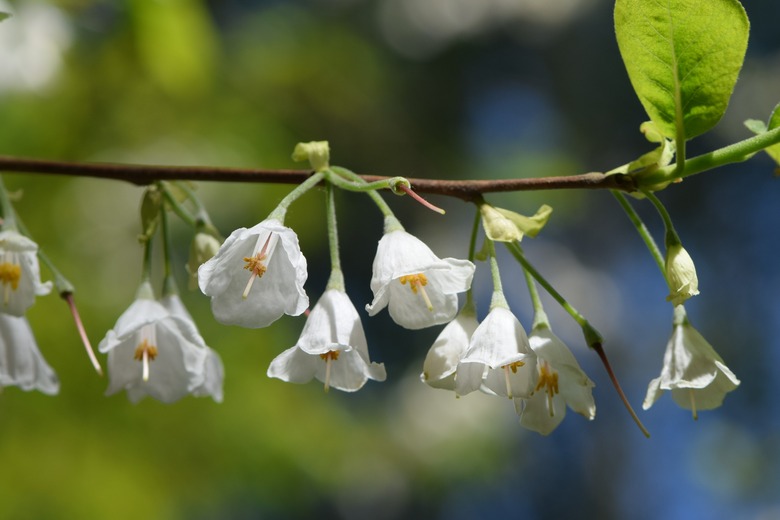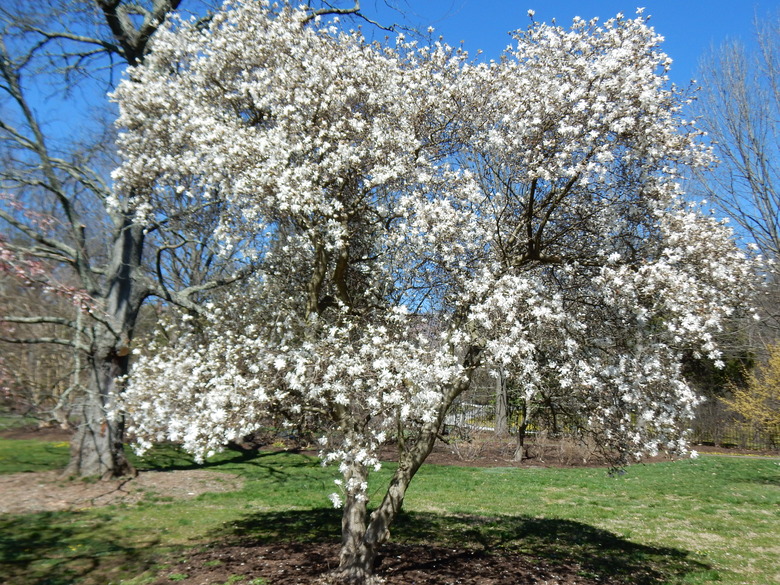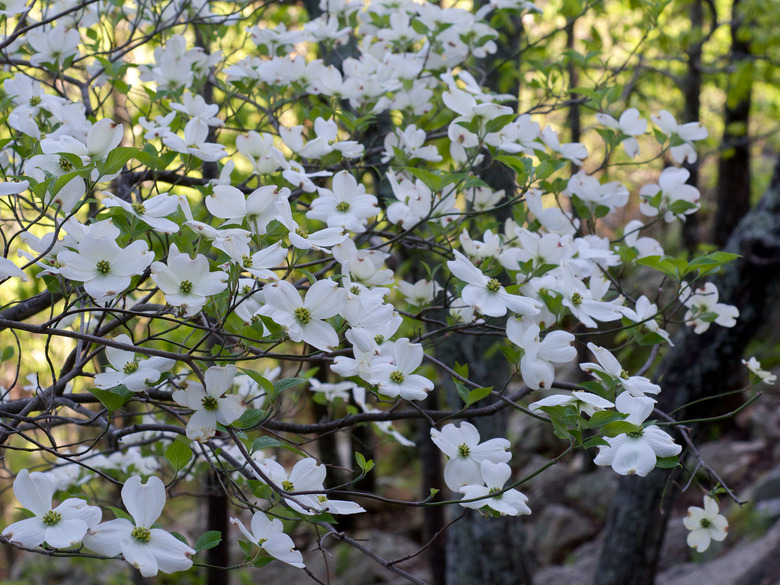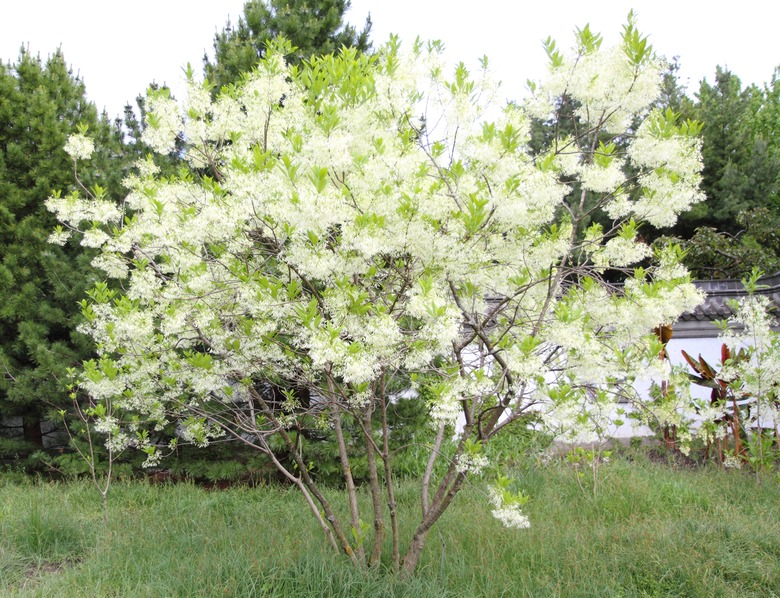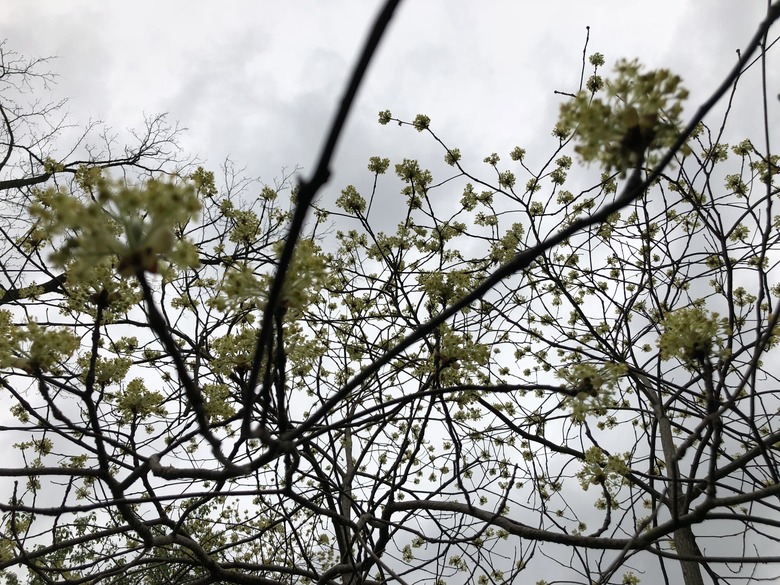North Carolina: Native Flowering Trees
Flowering annuals and perennials bring a landscape alive with color, but you'll really bump up the wow factor if you plant a flowering tree. And if you plant a native flowering tree, you'll score a two-for-one benefit by inviting native wildlife species to your yard. Native butterflies, bees, beneficial insects, birds and other pollinators are naturally drawn to native plant species. Some native insect species eat only the native plants they've grown together with and adapted to throughout many thousands of years.
What Is a Native Tree?
There are approximately 4,000 native plant species in North Carolina, of which approximately 220 species are trees.
Just because a certain tree is growing in your yard doesn't mean that it's native to your region, or even native to North America. Even though many tree species are adapted to other countries and climates, their place of origin may be halfway around the globe.
A perfect example in North Carolina is the crape myrtle tree (Lagerstroemia indica, USDA hardiness zones 6 to 9), which North Carolina residents may think is a native tree because it's practically a landscape staple throughout the state. But this beautiful tree that's covered with flowers in summer hails from Asia in countries that include China and Japan.
How Botanists Define Native Plants
There's no singular definition of a "native plant," but the most common assertions of botanical experts include:
- Native plants have
origins in a location where they naturally occur without human intervention/introduction.
- To be recognized as a "true" North American native plant, a species growing on
the continent must pre-date European settlement.
What Is a Flowering Tree?
When considering a flowering tree for your yard, your thoughts probably go to trees that bear showy flowers. But trees classified as angiosperms produce flowers, unless they've been bred as non-sterile cultivars, even though some tree blossoms are so tiny that you'll probably never notice them.
Although paperbark maple (Acer griseum, USDA zones 4 to 8) is a flowering tree, its ornamental value is in its shaggy, exfoliating bark instead of its tiny yellowish flowers, which are not easily seen. (Gymnosperms, or nonflowering plants, include trees that produce spore-bearing cones instead of flowers.)
Some tree species have separate male and female flowers on the same plant; other tree species have male and female parts in each flower; and many tree species bear male and female flowers on separate plants. Botany lesson aside, there are many North Carolina native trees with showy blossoms to dress up your yard.
Most have pink, purple or white blooms, and some flower in early spring, late spring or early summer, while some don't flower till late summer. Some are prized for their flowers, while some have unremarkable blooms but feature beautiful fall foliage to provide a pop of fall color.
Native Flowering Trees in North Carolina by Height
Consider the mature height of a tree before selecting one for your yard, and look overhead to make sure that its height will not interfere with power lines.
This list by height groups tree species by their potential maximum mature height, although their height range is also given. Many small trees may also be called large shrubs, although shrubs generally are regarded as having a mature height of less than 12 feet.
Small Native Flowering Trees (Up to 25 Feet)
- Star magnolia (Magnolia stellata, zones 4 to 8); 15-20 feet; white flowers
- Flowering dogwood tree (Cornus florida, zones 5 to 9); 15-25 feet; white, pink or red flowers
- Flowering crabapple (Malus hybrids, zones 4 to 8); 15-25 feet; pink, purple, red, or white flowers
- Serviceberry (Amelanchier spp., zones 4 to 9); 15 to 25 feet; white flowers
Medium Native Flowering Trees (25 to 40 Feet)
- Fringe tree, aka Grancy Graybeard (Chionanthus virginicus, zones 3 to 9); 12-30 feet; white flowers
- Eastern redbud (Cercis canadensis, zones 4 to 9); 20-30 feet; pink, red or white flowers
- Sweetbay magnolia (Magnolia virginiana, zones 5 to 10); 10-35 feet; white or cream flowers
- Carolina silverbell (Halesia carolina, zones 4 to 8); 10-40 feet; pink flowers
Large Native Flowering Trees (More Than 40 Feet)
- Sassafras (Sassafras albidum, zones 4 to 9); 30-60 feet; clusters of yellow flowers that are more profuse on female trees
- Southern magnolia (Magnolia grandiflora, zones 6 to 10); 60-80 feet; creamy white flowers
References
- University of Maryland Extension: Why Include Native Plants in Your Garden?
- State of North Carolina: Native Plants Week 2020 Proclamation
- Carolina Nature: Trees, Shrubs, and Woody Vines of North Carolina
- Missouri Botanical Garden: Lagerstroemia Indica
- North Carolina State Extension: Native Plants
- Clemson Cooperative Extension: An Introduction to Native Plants for SC Landscapes
- North Carolina State Extension: Acer Griseum
